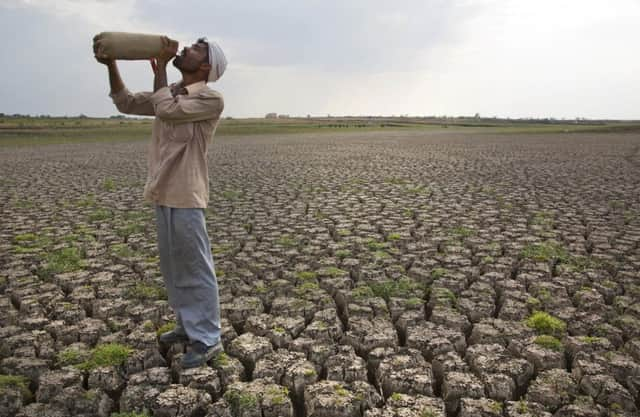Indian states crippled by record temperatures and drought


The record was set on Thursday in Phalodi, in the state of Rajasthan. India’s meteorological department said the previous high was 50.6 C, reached in 1956 in Alwar, also Rajasthan.
Authorities have issued a severe heatwave alert for the next two days in the western states of Gujarat and Rajasthan and parts of the central state of Madhya Pradesh. That means the areas can expect temperatures as high as 47C.
Advertisement
Hide AdAdvertisement
Hide AdApril, May and June are always excruciatingly hot across most of India before monsoon rains and cool temperatures arrive.
The monsoon hits southern India in the first week of June and covers the rest of the country within a month.
This year – as temperatures hit new highs – the monsoon is especially eagerly awaited with parts of the country are reeling under a drought brought on by two years of weak rains.
The prolonged heatwave this year has killed hundreds and destroyed crops in more than 13 states, impacting hundreds of millions of Indians.
Hundreds of farmers are reported to have killed themselves across the country and tens of thousands have been forced to abandon their farmland and live in squalor in urban slums to earn a living.
Rivers, lakes and dams have dried up in Rajasthan, Maharashtra and Gujarat, and overall groundwater reservoirs are severely depleted.
In some areas, the situation is so bad the government has sent in water by train for emergency relief.
Meanwhile, farmers in central India are struggling to survive as a devastating drought, caused by two successive failed monsoons, destroys their lands.
Advertisement
Hide AdAdvertisement
Hide AdIn Marathwada, a central Indian region which is home to about 19 million people, some 400 farmers have killed themselves so far this year.
The dry wells, shrivelled stubble in sugarcane fields and withered fruit trees across the region reflect the suffering of hundreds of millions of Indians across at least a dozen other states.
Monsoon showers, which normally run from June to September, are crucial in a country where 60 percent of the population works in agriculture and less than half the farmland is irrigated.
For the average farmer, who lives and earns from season to season, a poor monsoon means food must be carefully rationed because he has little money to spend.
With dreams of a good harvest, most small- and medium-scale farmers borrow money, often at exorbitant interest rates of up to 10 per cent per month, to buy seeds and fertilizers and hire tractors.
Consecutive droughts are enough to wipe out most small farmers’ meagre savings and push them into destitution.
In Marathwada the current drought is one of the worst in living memory.
The situation was so dire in that in April the Maharashtra state government began sending millions of litres of water to Marathwada’s worst-hit Latur district on a “water train”.
Advertisement
Hide AdAdvertisement
Hide AdSmall farmers have been pushed into poverty. Poor farm labourers, hired by middlemen to work on large farms, have been forced to work for little, or in some cases no, money.
Cattle farmers forced to bring their herds close to water supplies live in lean-tos and cook over open fires.